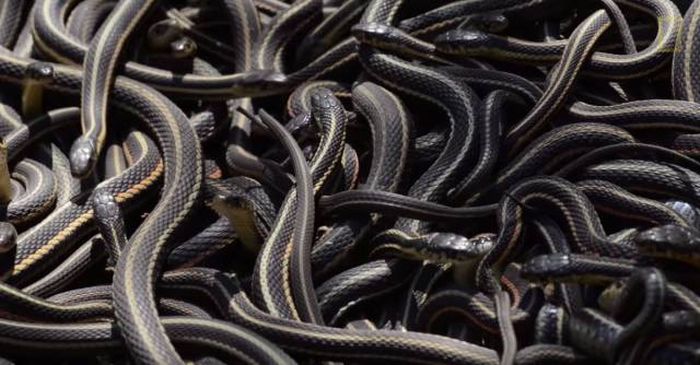

Rattlesnakes are not the evil beings some believe they are, and they don’t go out seeking humans to attack. The oldest northern Pacific rattlesnake was a captive named Striker, who was raised by Placer High School for 31 years before being transferred to Sacramento Splash for another 3 years, when he passed away in 2015 at 34 years old due to complications with a tumor.

On average, rattlesnakes tend to live anywhere from 7 – 10 years - however, in places where there’s less human interference, it’s possible healthy snakes can rack up double that. Speaking of age: rattlesnakes can rack up many more years on their lives than most of us think. Additionally, as they crawl through rocks and other rough debris, sections can break off and lower the total count. You cannot tell the exact age of a rattlesnake by counting its rattle segments given the variability in shed patterns. Rattlesnakes, given their name, acquire a new segment (also known as a “button”) to its rattle every time it sheds, which can range from a couple to several segments a year depending on the age, location, and health of the snake. The snakes will continue to grow for several years, with growth stopping or slowing notably between (roughly) 5 – 8 years old. Newborns are around 4 – 5″ long, and grow to be about a foot long (give or take a couple inches for some) once they hit a year old. Newborn rattlesnakes are indeed born with a single button, though it is essentially silent. Their chunky appearance generally stands out compared to other large snake species we have, like the Pacific gopher snake - which can grow longer than our rattlesnakes, but are not as wide-bodied. The average size of adult northern Pacific rattlesnakes is roughly 2.5 – 3 feet long, and are the widest species of snake we have in northern California. Brown, orange, and yellow tints tend to be the most common color hue of individuals and populations seen, with green tints seemingly more common in coastal forest environments. The color of their patterns can vary from very dark, to a noticeable green, yellow and orange tints. Their appearance can vary in color and pattern a bit, but most individuals have dark blotches/spots along back (to view photos, click here). They are most commonly found out and about doing snake business during the day when temperatures are between 75 – 85 ☏, though when temperatures are hot (around >90 ☏), they tend to become nocturnal, as getting caught out in the open during a hot day can prove fatal rather quickly. They are active from early to mid-spring (depending on weather conditions), through the summer & into early fall, and hunker down during the cool season at den sites that can house a few to many snakes. Our (being northern California’s) species of rattlesnake can be found northward into Oregon, Washington, and even in British Columbia. That said, the region where the two subspecies cross over may also extend north and south slightly into adjacent counties. The Northern Pacific Rattlesnake inhabits most of northern and central California where habitat & populations exist, with the intergrade between the Southern Pacific Rattlesnake & Northern Pacific Rattlesnake running along a fairly straight west-to-east line starting around San Luis Obispo county, east to Kern county.


 0 kommentar(er)
0 kommentar(er)
